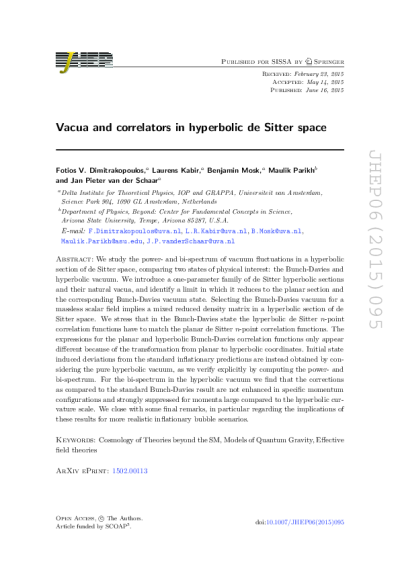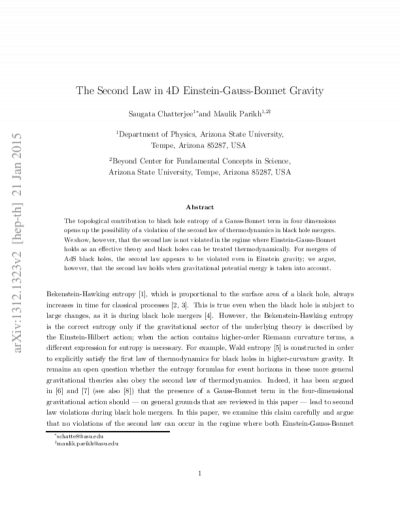Vacua and Correlators in Hyperbolic de Sitter Space

We study the power- and bi-spectrum of vacuum fluctuations in a hyperbolic section of de Sitter space, comparing two states of physical interest: the Bunch-Davies and hyperbolic vacuum. We introduce a one-parameter family of de Sitter hyperbolic sections and their natural vacua, and identify a limit in which it reduces to the planar section and the corresponding Bunch-Davies vacuum state. Selecting the Bunch-Davies vacuum for a massless scalar field implies a mixed reduced density matrix in a hyperbolic section of de Sitter space. We stress that in the Bunch-Davies state the hyperbolic de Sitter n-point correlation functions have to match the planar de Sitter n-point correlation functions. The expressions for the planar and hyperbolic Bunch-Davies correlation functions only appear different because of the transformation from planar to hyperbolic coordinates. Initial state induced deviations from the standard inflationary predictions are instead obtained by considering the pure hyperbolic vacuum, as we verify explicitly by computing the power- and bi-spectrum. For the bi-spectrum in the hyperbolic vacuum we find that the corrections as compared to the standard Bunch-Davies result are not enhanced in specific momentum configurations and strongly suppressed for momenta large compared to the hyperbolic curvature scale. We close with some final remarks, in particular regarding the implications of these results for more realistic inflationary bubble scenarios.
- Author (aut): Dimitrakopoulos, Fotios V.
- Author (aut): Kabir, Laurens
- Author (aut): Mosk, Benjamin
- Author (aut): Parikh, Maulik
- Author (aut): van der Schaar, Jan Pieter
- Contributor (ctb): College of Liberal Arts and Sciences



